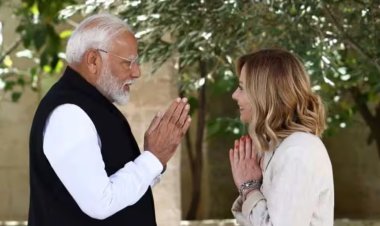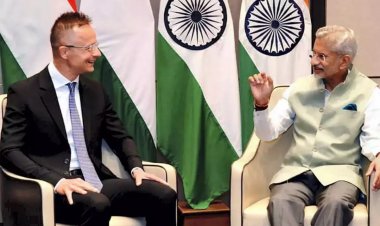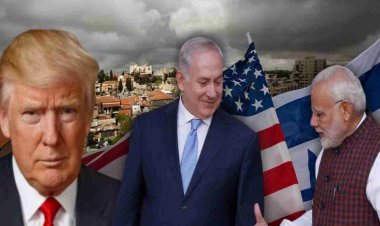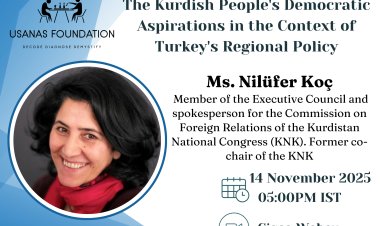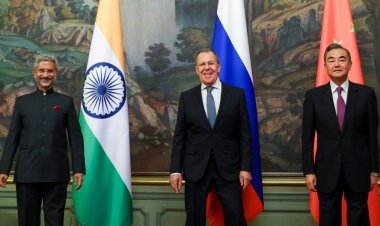Bloom Review: How the West finally gets its views on Khalistanis right by examining them through prism of terrorism
The author analyses how the West understands the Khalistan movement. It further discusses the Bloom Report commenced by the UK government where the report discusses Sikh extremism in detail.
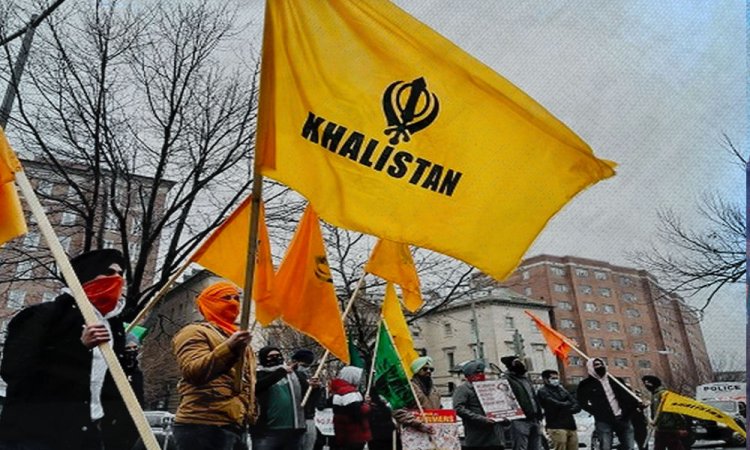
Analysis
By Abhinav Pandya
As India makes rapid strides towards global eminence as a geostrategic and economic heavyweight, she also comes across an array of security challenges, ranging from hybrid and conventional to information, propaganda and digital threats. Some of them resurface like skeletons from the old cupboards. Khalistan extremism is one such challenge. Though India’s main threat from religious terrorism and extremism with a pan-India spread historically comes from Islamic extremism, Sikh separatism-cum-extremism has also posed a serious challenge to India’s security and territorial integrity, particularly in the 80s and 90s. However, unlike Islamic extremism and terrorism, the Khalistan separatist and extremist movement was purely a Pakistan-sponsored sabotage project and had no grounds in the Sikh religious tenets and scriptures, the movement petered out.
The basic essence of Sikhism and Sanatan being the same, excesses committed against Hindus, violent terrorist attacks, intimidation of those Sikhs who disagreed with Khalistanis and links with ISI exposed Khalistanis as opportunistic vendors of brutality and bloodshed with no regard for Sikh values and teachings. It led to their near-total annihilation from Punjab, ideologically and physically. Nevertheless, they could still carry their extremist agenda and subversive activities in the Western world, portraying themselves as victims of oppression and injustice at the hands of the Indian state and Hindus.
Resurgence of Khalistani activities
In particular, the Khalistan activities have strengthened over the last six to seven years. This has coincided with India’s robust force posture on internal and external security matters manifest in the various measures like a harsh crackdown on Pakistan-backed militancy in Kashmir, terror funding, Uri surgical strikes and Balakot strikes, banning Jamaat-i-Islami, abrogating Article 370, passing CAA/NRC laws, proscribing PFI and tough stance against the Chinese aggression in Ladakh and Arunachal Pradesh. Hence, it is not unreasonable to conclude that once again India’s adversaries have ramped up their efforts to sabotage India’s growth and territorial integrity through Khalistan proxies. However, the discussion on the links of Pakistan and other state actors with Khalistan extremists is not the main focus of this article. In mainland Punjab, they have attempted to revive the terrorist and extremist activities under the leadership of new Bhindrawale-styled poster boys like Amrit Pal Singh.
However, their uncontrolled presence and activities abroad, particularly, in the West have been a major concern for India having a debilitating impact on Delhi’s diplomatic ties with the West. Following the referendum 2020 by the Sikhs for Justice, Khalistani activists have attacked Hindu temples and religious institutions, Indian consulates and attacked non-Sikh Indians and those Sikhs who disagree with their ideology in the US, Canada, UK, New Zealand and Australia. They have indulged in massive online hate propaganda and information war against India.
India and the West are exploring new terrains of cooperation in security, intelligence, technology and economy, in the backdrop of expansionist China; however, Khalistani activists’ unrestricted anti-India propaganda and subversive activities in the West generate friction. It has resulted in a large section of India’s strategic establishment questioning the West’s credibility. Senior policymakers are untrustworthy of the West and nurture apprehensions about the involvement or the tacit support of the state and its intelligence agencies to anti-India subversion, particularly Khalistanis. Recent incidents such as the attack on the Indian consulate in Britain have further strengthened such apprehensions.
The question that arises in the power corridors of North Block and South Block and the extended Indian security ecosystem comprising several think tanks and independent analysts and experts is what is the West’s stand on Khalistani extremism and terrorism? They say that if the West is serious against them and appreciates Indian concerns, they can not allow attacks on Indian consulates and temples. Secondly, what is their understanding or perception of Khalistani extremism or separatism?
Bloom review
The answers to these pertinent questions can be gleaned from the scattered and individual statements, declarations and policy pronouncements of the Western states. However, such attempts have failed to produce a consistent and nuanced view of the Western understanding of the Khalistani extremism. In this context, the report commenced by the British government to review how the government engages with faith provides us with a much clearer picture of the British government’s understanding of and approach towards Khalistani extremism. The report commenced in 2019 and produced under the authorship and the overall supervision of Colin Bloom, the Independent Faith Engagement Advisor is titled ‘Does Government do God?” It has taken three years of rigorous investigation and research to produce and publish this report. This 60,000-page report is based on 21,000 responses collected from one of the largest public calls for evidence from the government. The findings based on one million pieces of data and thousands of other interactions make a comprehensive review of a highly sensitive subject having a major bearing on the national security of the UK and its ties with India.
The gravity of this report can also be gauged from the fact that former prime minister Boris Johnson, commenced it and along with four secretaries of state and the faith minister Stephen Greenhalgh championed it, and enabled it. The report in general is about “how government engages with faith, people of faith and places of worship.” However, its extant and nuanced discussion on Khalistan extremism in 13 pages shows that this national-level initiative has taken the Khalistan threat very seriously. Notably, in the chapter on faith-based extremism, the discussion on Khalistan extremism is the longest in terms of the pages and word limit as compared to the analysis of Islamic extremism, rising Hindu nationalism and Buddhist extremism.
Sikhs in UK
The report makes very insightful and interesting observations about the rising Sikh extremism and Khalistan activities. Tracing history, it informs that the Sikhs constitute one of the oldest minorities in the UK. However, the first major migration took place in 1950. According to the 2021 census, there are 5,24,000 Sikhs in England and Wales. They have higher employment standards and home ownership as compared to the Christians. There are about 250 gurudwaras in UK, the vast majority of which are governed by independently elected or selected local bodies. Notably, India-based Akal Takth and Shiromani Gurudwara Prabandhak Committee exercise significant influence over them through their edicts (hukumnama) and advice notes (Sandesh).
Khalistan movement
Bloom Review expresses serious concern over the divisions in the Sikh community caused by an extremist fringe ideology within the pro-Khalistan movement. However, the review opines that the “promotion of the Khalistan ideals in itself is not subversive.” Further, it says, “but the subversive, aggressive and sectarian actions of some pro-Khalistan activists and the subsequent negative effect on wider Sikh communities should not be tolerated.” (pg 123)
The Bloom Review categorically states that: “Propagating hate and divisions, trying to brainwash youth to cause divisions and hate in India, [is] really sad. [Some Sikh extremist groups] are using places of worship to fund or getting funds under name of faith and spearheading hate, these types of organisations shouldn’t be allowed to operate in our great country.” (pg 123)
Demolishing the myths of the grand Khalistan narrative with massive support, as it is projected, the review says that only a small minority of Sikhs support and are involved in Khalistan activism. The majority of Sikhs do not subscribe to their views. However, this small minority controls the Gurudwaras and uses them to generate funding and recruit youth for their extremist and divisive agenda and instils them with hatred and violence. While discussing the scarce support base of Khalistanis, the review also highlights that the Khalistani motives have no religious content, they are purely political. Such duplicity and dishonesty become more obvious when they hardly talk about the excesses faced by Sikhs in Pakistani Punjab and refrain from uttering a single word about including Pakistani Punjab in Khalistan i.e. imagined Sikh homeland.
In the review, most of the Sikh respondents, including prominent community and religious leaders, expressed serious concern about the small minority of Khalistan extremists presenting a ‘belligerent’ picture of Sikh community. As per their testimonies, if the British government fails to distinguish between the subversive Khalistani extremists and the mainstream Sikh community, it would be “turning a blind eye to religious extremism.”
The review’s evidence-gathering exercise also found several cases of mainstream Sikhs being intimidated and threatened directly or indirectly through family members by the Khalistani activists. Former premier of British Columbia, Ujjwal Dosanj was threatened by the Sikh extremists for speaking against them. Bloom Review states: “Because of their fear of retribution, they spoke under the condition of anonymity, but their stories were all very similar. At times they have felt disparaged, victimised, harassed or threatened by aggressive Sikh activists who do not hesitate to abuse or bully anyone who either criticises them or does not follow or support their opinion. Many have been intimidated and called ‘traitors’, ‘impure’, ‘nastic’ (infidel) and ‘patits’ (heretics). Members of different political parties who have served in public office have given examples of how they felt pressured to do what these activists wanted, and how some Sikh activists claim to have power over not only the ballot box, but also the selection processes of different local parliamentary and political bodies. One public servant said they would “live in fear” of retribution if they were to speak out against the ideological narrative of the activists.” (pg 125)
This phenomenon is very similar to the tactics of Jamaat-e-Islami in Kashmir. In J&K’s rural areas, colleges and other social and public spaces Jamaat rank and file maintain a psychological domination through terror and intimidation. Those who do not agree with them and their armed wings like Hizbul such as the famous journalist Shujaat Bukhari and activist Babur Qadri are either killed, boycotted or threatened.
Another Khalistani tactic in common with terrorist groups like Al Qaeda, Lashkar and ISIS is the distortion, misrepresentation and selective use of historical incidents, contexts and tales to legitimise their violent and extremist activity and hatred towards Hindus. Along the lines of Islamic terrorist groups, they are trying hard to use Sikh religious history, teachings and scriptures also. However, it is proving to be extremely challenging as the common philosophical essence, origins and ritualistic and socio-cultural overlapping between Sikhism and Hinduism is so obvious and deep-rooted that it can not be blatantly refuted unless one makes sweeping changes in the text itself.
Dwelling more upon their tactics the review expresses concern over such fringe Khalistani groups getting ‘disproportionate amounts of attention’ despite their small number. They also amplify their influence by creating aliases, proxies and masquerading as human rights activities. Such tactics are also used to seek legitimacy. Also, Khalistani activists upload videos full of “alarmingly dangerous and offensive imagery” and language on social media portals such as iTunes, YouTube and Facebook to glorify extremist behaviour and incite violence. Such professionally curated videos depict “graphic abduction, murder and torture of Indian leaders” and they also glorify dead Khalistani terrorists. Many such YouTube channels have subscribers in thousands.
Such videos are also uploaded by Kashmir-centric terrorist groups such as People’s Anti-Fascist Front, The Resistance Front, Lashkar and Jaish. These striking similarities confirm ISI’s robust role in running the Khalistan movement, in strategic and tactical matters both. Bloom Review recommends that: “It is vitally important that the government develops a more comprehensive understanding of the tactics and methods some Sikh activists employ to divert public attention away from their subversive agenda.” (pg 127)
Cautioning the British government, the report mentions that the parliamentary authorities should be watchful and not engage with Khalistan activists and leaders involved in subversion, intimidation and threats. The mainstream Sikh leadership should be roped in to represent the community in higher government-level engagement.
Finally, the review makes a powerful recommendation leaving no doubts about its perception of Khalistani extremist groups as similar to other international faith-based terror groups like Al Qaeda and ISIS, and its staunch disapproval of Khalistani activists’ subversive tactics and agenda:
“Government should clearly define and investigate extremist activity and identify where this exists within the Sikh community, taking steps to develop a more nuanced and comprehensive understanding of subversive and sectarian Sikh extremist activity. Government should ensure that unacceptable and extremist behaviours are not inadvertently legitimised by government or parliamentary engagement. The reconsideration of previous decisions regarding the activity and legality of certain groups should be included. This will require improving faith literacy across government and the parliamentary estate, particularly on intrafaith issues, so government can be more discerning regarding engagement and representation within British Sikh communities.” (pg 123)
Conclusion: Taking the bull by its horns
In one of my previous articles, for TNI, I had argued on similar lines- that Khalistanis do not represent mainstream Sikhs, they have no grounds in Sikh religious philosophy and they are intrinsically opposed to human rights and liberal values just like Islamic extremist and terrorist groups. However, that was a view of an independent analyst for which I received a lot of criticism from various human rights quarters for my analysis. But, finally, coming from independent agencies and official quarters, this report calls a spade a spade.
The Bloom Review merits special attention from India’s Ministry of External Affairs, Sikhs, the larger strategic community, academia and the media because it is the first comprehensive report from the Western world which, in essence, puts the Khalistanis at par with other transnational terrorist groups such as Al Qaeda, IS and other Islamic extremist and terrorist groups. Secondly, the review categorically states that Khalistanis can exercise a considerable influence in the political quarters of Britain, Canada and other Western nations, despite their small percentage. They can do it because of their hold over the vote banks, use of aliases, intimidation of mainstream Sikhs and the parliamentarians’ and policy makers’ poor faith literacy and inadequate understanding of Khalistani extremism and Sikhism. Thirdly, the report also highlights that Khalistanis can exercise significant influence on the narrative because of their nexus with left-liberal human rights activists. In several instances, Khalistan activists act under the garb of human rights activists. Thirdly, the report comes out as an objective study purely from a faith perspective, devoid of any ulterior political or agenda-building objectives.
Disclaimer: This paper is the author's individual scholastic contribution and does not necessarily reflect the organization's viewpoint. The article was originally published by Firstpost.



